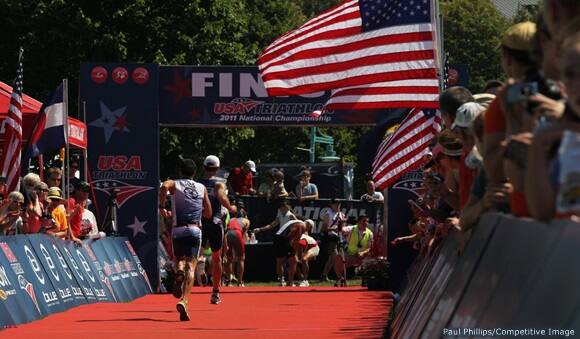Triathlon #

Swim, bike, run. Though the basic format stays the same, triathlon has several racing distances, from the youth events all the way up to double and triple ultra distance events. Athletes of all shapes, sizes, ages and fitness levels compete in triathlon yearly to prove that when you put your mind to something, anything is possible.
Getting Started
If you are planning on completing your first triathlon or your 100th, there is a lot of preparation that goes into this sport. Multisport participation takes training, both physically and mentally, knowledge and commitment. Most people cannot decide they are going to do a triathlon without preparing for months ahead of time. The allure of multisport is that it gives people a goal. It is something that motivates them to train and eat right. It also provides a great social atmosphere in which life long friends can be found at club events, training rides and races.
But, the preparation is not overwhelming. If you are committed to a healthy lifestyle, you are probably already on your way to being ready to compete. There are numerous coaching resources to take advantage of, both in real life and online. USA Triathlon’s coaching certification program is second to none throughout the world and has produced over 1,200 certified coaches around the country.
Common Race Distances
|
|
SWIM |
BIKE |
RUN |
|
Short |
|
|
|
|
Kilometer |
0.4-1 |
8 - 30 |
1.6-6.3 |
|
Mile |
0.25-.62 |
5-18.6 |
1-3.9 |
|
Intermediate |
|
|
|
|
Kilometer |
1.1-2 |
30.1 - 50 |
6.4-12.8 |
|
Mile |
0.63-1.25 |
18.7-31 |
4.0-8 |
|
Long |
|
|
|
|
Kilometer |
2.1-3.1 |
50.1-99.9 |
12.9-29.9 |
|
Mile |
1.26-1.9 |
31.1-62 |
8.1-18.5 |
|
Ultra |
|
|
|
|
Kilometer |
3.2+ |
100+ |
30+ |
|
Mile |
2.0+ |
62+ |
18.6+ |
Triathlon - Distances are categorized by using the category in which two of the distances fall. If all three are in separate categories the distance is categorized by the bike.
Note: Triathlons can be swim, bike, run in any order
Youth
|
Race Age |
SWIM |
BIKE |
RUN |
Best Practices |
|
Youth 7-8 |
50 - 100 meters |
2 - 3 K |
1 K |
Pool swim and closed roads |
|
Youth 9-10 |
100 meters |
3 - 5 K |
1 K |
Pool swim and closed roads |
|
Youth 11-12 |
200 meters |
5 - 7 K |
1.5 - 2 K |
Closed roads |
|
Youth 13 - 15 |
200 - 375 meters |
8 - 10 K |
2 - 2.5 K |
Closed roads |
0.5 mile approximates 800 meters
500 meters approximates 0.31mi
1 mile approximates 1.6km
The Olympic distance is the distance completed by athletes at the Olympic Games. Professional triathletes competing in events to qualify them for the Olympic Games participate in draft-legal racing during the bike segment. Drafting allows them to ride closer and in groups called packs.
In age-group racing (amateur), drafting is not allowed. Athletes must maintain a minimum or three bike lengths distance between them and the rider in front of them.
Events can range from below 50 to over 3,000 competitors. Events such as the Chicago Triathlon have over 6,000 total competitors, racing in the youth, sprint and Olympic distance events during the festival weekend. On the flip side, clubs coordinate “club only” events that can have 20-30 participants competing in a fun, no-pressure event.
History
Learn about the history of the sport on in our history section.
Future
Triathlon has experienced monumental growth in the 21st century. In the summer of 2006, USAT hit 75,000 annual members. In 2007, USA Triathlon reached the 100,000 member milestone. In 2011, annual membership exceeded 140,000. There have been between 200,000 and 250,000 athletes competing yearly in the past few years and we don’t expect those numbers to slow anytime soon.
USAT is committed to introducing the benefits of the sport and the lifestyle that comes along with it to competitors of all ages, starting with youth, high schools and colleges. The average age of multisport athletes is between 35-40 years old, so we will be emphasizing the sport to younger groups to continue the strong growth of the sport.
In addition, USA Triathlon will be emphasizing the participatory aspects of the sport more throughout the next decade to encourage those from all walks of life to get involved.